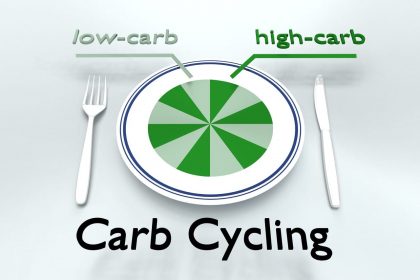Zone 2 cardio workouts have gotten a lot of love lately. The second least-intense type of cardio on a scale of 1 to 5, zone 2 involves raising your heart rate only a bit—to 60% or 70% of your max. It puts little stress on the body and therefore doesn’t trigger the kind of cortisol spike (albeit, a temporary one) that more intense workouts can bring. Hence why a lot of women, particularly those in midlife, tend to hang out in this zone, Louisa Nicola, MMed, a New York–based neurophysiologist who studies Alzheimer’s disease in women, tells SELF. But there’s real value in bumping up the effort to zone 5 (or 90% of your max heart rate) every so often, particularly for your brain health, she says.
To be sure, doing any form of movement offers some brain-boosting benefits: It can help stem inflammation, shuttle more blood (and therefore, more oxygen and nutrients) to your brain, and even pump out proteins that support the growth of new brain cells or strengthen their connections. With zone 5 cardio, though, you can magnify several of these effects and channel others that may come only with that extra burst of intensity.
For instance, a 2024 study of older adults suggests brief bouts of zone 5 cardio interspersed with recovery periods can trigger better performance on memory tests and less age-related shrinkage of the brain’s memory center, as compared to low- or medium-intensity exercise. And a 2020 study found that high-intensity interval training (HIIT) (not moderate-intensity continuous training or resistance training) improved older adults’ cognitive flexibility, or ability to quickly switch between mental tasks. Keep reading to learn why incorporating zone 5 cardio in your workout routine may help keep your brain sharp, and how Nicola suggests everyone—particularly women in midlife—do just that.
Why high-intensity cardio especially supports brain health
Jamming out quick bursts of high-key cardio increases your VO₂ max, or the max rate at which your body can use oxygen during exercise; a higher level reflects greater cardiorespiratory fitness. This, coupled with the “sheer shunting of blood to the brain during high-intensity training can benefit brain health,” Nicola says, “as the brain is a highly vascular organ and needs a constant supply of blood flow to function at its peak.” Hence why studies have linked greater cardiorespiratory fitness and higher VO₂ max to better working memory, decision-making, and processing speed, as well as lower risk of dementia.
That’s an especially relevant finding for perimenopausal women, Nicola says. The related drop in estrogen can lead to dips in muscle mass and fitness; if you don’t mitigate these shifts by keeping on top of physical activity, including high-effort cardio, you could then put your brain at greater risk of decline too, she explains.
At the same time, intense zone 5 cardio sparks an especially “robust” release of proteins like brain-derived neurotrophic factor (BDNF), Nicola says, which are produced as a result of muscle contractions and support the growth of and connections between brain cells. And research suggests greater BDNF levels coincide with boosts in cognitive performance.
Vigorous cardio sprints also make use of fast-twitch muscle fibers, which tend to diminish rapidly with age, Nicola points out. In order to move quickly, these muscle fibers have to fire off and receive signals from your brain in fast succession, which can improve your mind-muscle connection, ultimately enhancing your agility and coordination. That makes you less likely to stumble and fall, which can also help reduce your overall risk of dementia.
How to work zone 5 cardio into your routine and reap the brain benefits
One of the biggest upsides of high-effort cardio is its low time footprint, Nicola says: It involves brief sessions just a couple times a week, max. (The greater intensity means you can only keep it up for so long, and the additional strain on the body necessitates more recovery time between sessions.) It’s the reason Nicola often tells the time-strapped women she works with to prioritize quick hits of zone 5 cardio and heavy resistance training—the kinds of exercise that offer the most bang for your buck—and leave the lighter cardio, like walking or jogging, “as a bonus activity, in case you find some downtime.”
As for what that cardio burst might look like? Nicola suggests choosing an activity you enjoy that significantly raises your heart rate, like cycling, running, swimming, or, her personal favorite, climbing on the StairMaster. If you don’t typically do much cardio, start with very short spurts: 20 or 30 seconds pushing as hard and fast as you can, followed by 40 seconds to a minute of rest, and repeat five to 10 times, or whatever feels doable.
If you’re a regular cardio-doer, consider bumping up the length of the work interval—Nicola, for one, goes hard out on the step machine for two minutes, then rests for two minutes, and repeats that for 20 minutes total. (She sets the machine to a level 15, or a pace of around 110 steps per minute, or higher, depending on how she’s feeling.)
The “gold standard” for a high-key cardio push is the Norwegian 4×4 workout, Nicola notes, which involves a circuit of four minutes at max intensity followed by three minutes of light exercise, repeated four times. But that’s a long time to be in zone 5, she says, typically only possible for endurance athletes. For everyday gym-goers, by contrast, it’s more practical (and safer) to do zone 5 cardio in quicker bouts of a few seconds to a couple minutes, she says. And as with any type of exercise, listen to your body: While the benefit of zone 5 cardio may come from reaching that breathless, heart-racing state, if you start to feel lightheaded or woozy, or experience any other abnormal symptom, pause right away. Pushing it too hard can negate the host of benefits you could otherwise gain.
Related:
- I’m a Neurologist, and Here’s the No. 1 Thing I See People Do That’s Bad for Their Brain
- 6 Things to Do in Your 30s to Improve Your Memory for the Long Haul
- Do I Get a ‘Better’ Cardio Workout If I Go Faster or Longer?
Get more of SELF’s great service journalism delivered right to your inbox.







